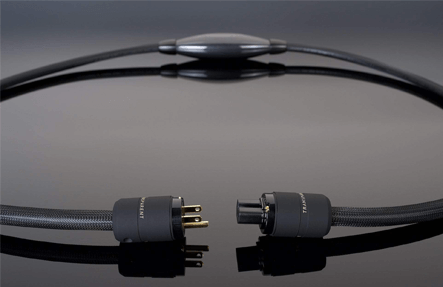If cables make a difference in the chain of playback for high fidelity, what should you be spending on them, and how much importance should you be giving them? And, is it all a rabbit hole? Are audiophiles chasing their own tails?
After a solid decade of messing around and having fun with hi-fi, LP and CD collecting, and having journeyed through several iterations of sound systems varying from budget to sums I would rarely admit to, I’ve come to the conclusion that, yes, cables can make a noticeable difference to the flavour of sound one experiences, but sticking with the epicurean reference, they tend to be the spice in a high fidelity recipe, not the meat and potatoes.
I’ve known people with $1,000 amplifiers and $1,500 AC cables… to me, this is putting the cart before the horse, but that’s what’s great about the hobby; to each their own and it’s a tribal affair. Many spend more on AC conditioners, AC cables, RCA or balanced cables, speaker cables, etc., than what the actual components these transformers and connections are supposedly in service to.

That’s not to say spending money on cables or power transformers is wrong, I just apply a different, if a little judicious, practicality to the descending order of importance in the hi-fi playback chain (I know, laughable in this hobby). To me, the two most important points in the playback chain (in my opinion) are the source and the loudspeakers.
Whether were talking vinyl – the stylus/cartridge is your source component then, followed immediately by tonearm and platter/ motor drive system – or CD transport/DAC for digital, and then a loudspeaker capable of moving a sufficient amount of air and delivering a frequency response you’re going to be able to pressurize your space with.
But choosing these key reference points requires some forethought; do you have room to house a growing vinyl/CD collection or do you prefer the ethereal nature of a streaming service? Choice made? Great. Next, choosing the speakers that connect with you on both an emotional level and that fit within your living environment. Modern or vintage two-way, dynamic-driver bookshelf monitors or smaller stand mount or tower speakers are great for apartments, as are large, horn-based designs (just ask the Japanese), and electrostatic models too (fancy a pair of ESL-57?), just don’t worry too much about it – go with what your budget allows or your heart desires – since once you’ve picked, that choice dictates your amplification.
Two-way bookshelves, stand mount three-way designs, etc., or electrostatic (or planar) tend to be less efficient, employ more complex crossover slopes, and therefore require more watts to drive them (40-200 should cover almost anything), making solid state a prudent choice. Larger more efficient horns, or horn-loaded designs tend to be highly efficient and can make do with a handful of watts, making tubes, or valves as the British refer to them, the amplification of choice.
There, you figured out your front-end (source), your speakers and your amplification. Now you just need to sew it all together with connections. This is where the cable conundrum comes into play. If you spent, for example, $3,000 on all your main components, what should you spend on cables? My advice is start at the lower end first. There are many budget cable brands (and high-end brands) who offer gateway drug cables at modest cost.
The thinking here, in my experience, is to become intimate, first, with what your system sounds like with cables which do not cost as much as the entire system. The hard-earned coin should always be dropped on main components; this is the meat and potatoes, cable is the butter, salt and pepper used to flavour to taste – your taste.
Also, the money you save initially while you familiarize yourself with your setup by enjoying listening to music can go towards new software (LP, CDs, higher-quality streaming service tiers). Once you really know how John Coltrane’s modal pitch experimentations sound, then go to your local bricks and mortar hi-fi shop and start sampling higher-quality cables and see if there’s more air around Art Blakey’s high hat, more grunt to Muddy Waters’ drawl, and more timbral colour to the resined bow and cello body of Yo Yo Ma’s sonic discourse.

Once you have your metric, your reference as it were, you’re ready for the adventure that cable sampling offers your ears. The best cables will bring out more of what is there. Period. Use your ears and go with what sounds best to you. My suggestion, based on personal experience with swapping cables in as logical an order as I could come up with, is to start with the cables connecting your turntable, DAC or CD player to your amp/preamp and then your speaker cables and lastly the AC/Mains cables. Going one connection at a time also allows you to more accurately gauge what, if any, change you’re implementing.
High fidelity is all about the journey, enjoy the ride and turn the cable conundrum into a cable carnival. Relax, listen and learn about all the varying degrees recorded playback can be manipulated physically through materials used. Don’t worry about “are my cables good enough?” Don’t worry at all, it’s supposed to be relaxing and adding to the pleasures of life, not causing anxiety through audiophile nervosa. Any capable and respectable hi-fi shop can help with cables and demos, don’t be shy, start the conversation and enjoy where it takes you.
As a caveat, it is also my experience that the higher quality your source components and loudspeakers comprise, the more they reveal differences in cable choice.
Speaker Cable Photos courtesy Transparent Cable. The Wave ($350) and Opus ($60,000).

